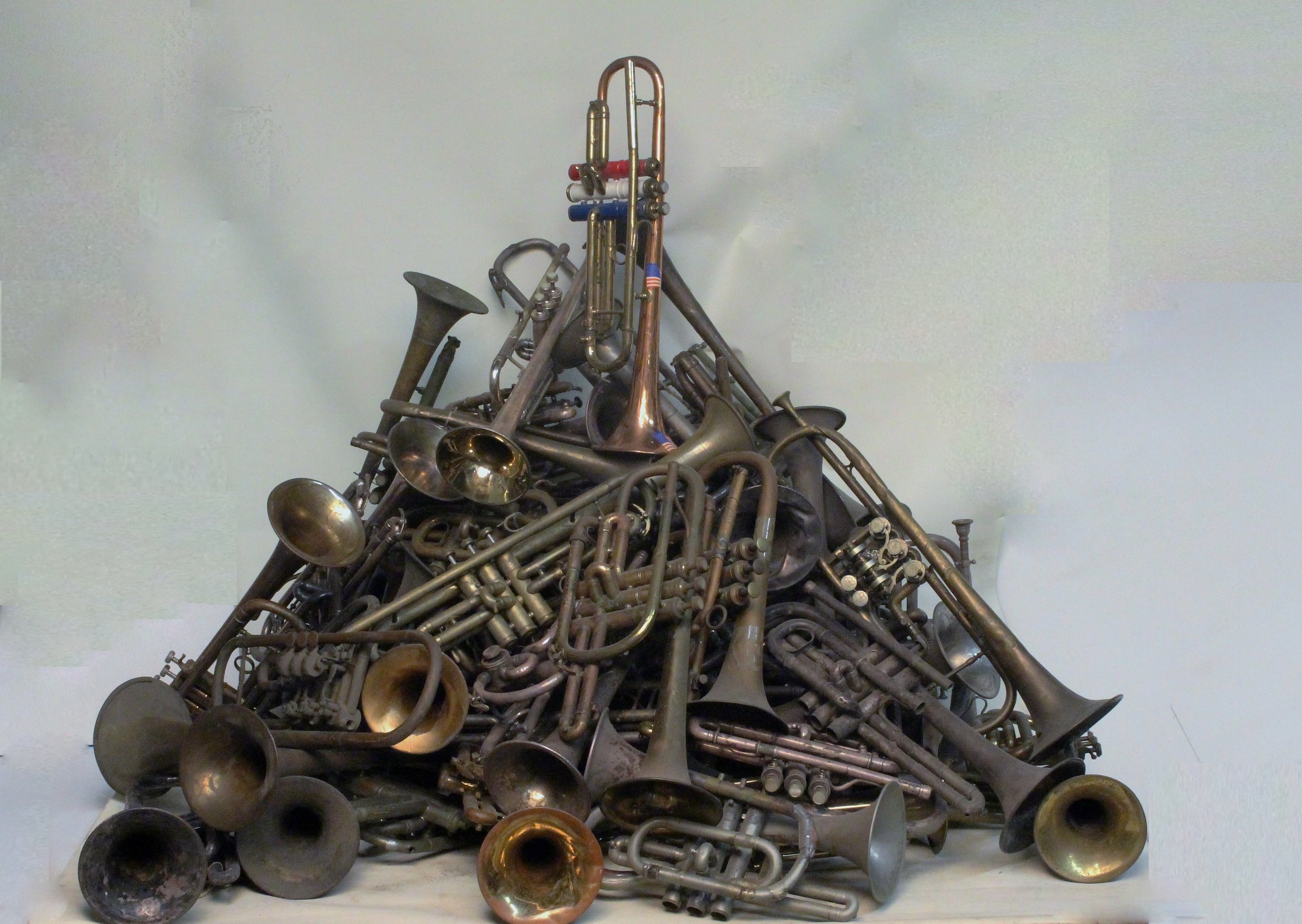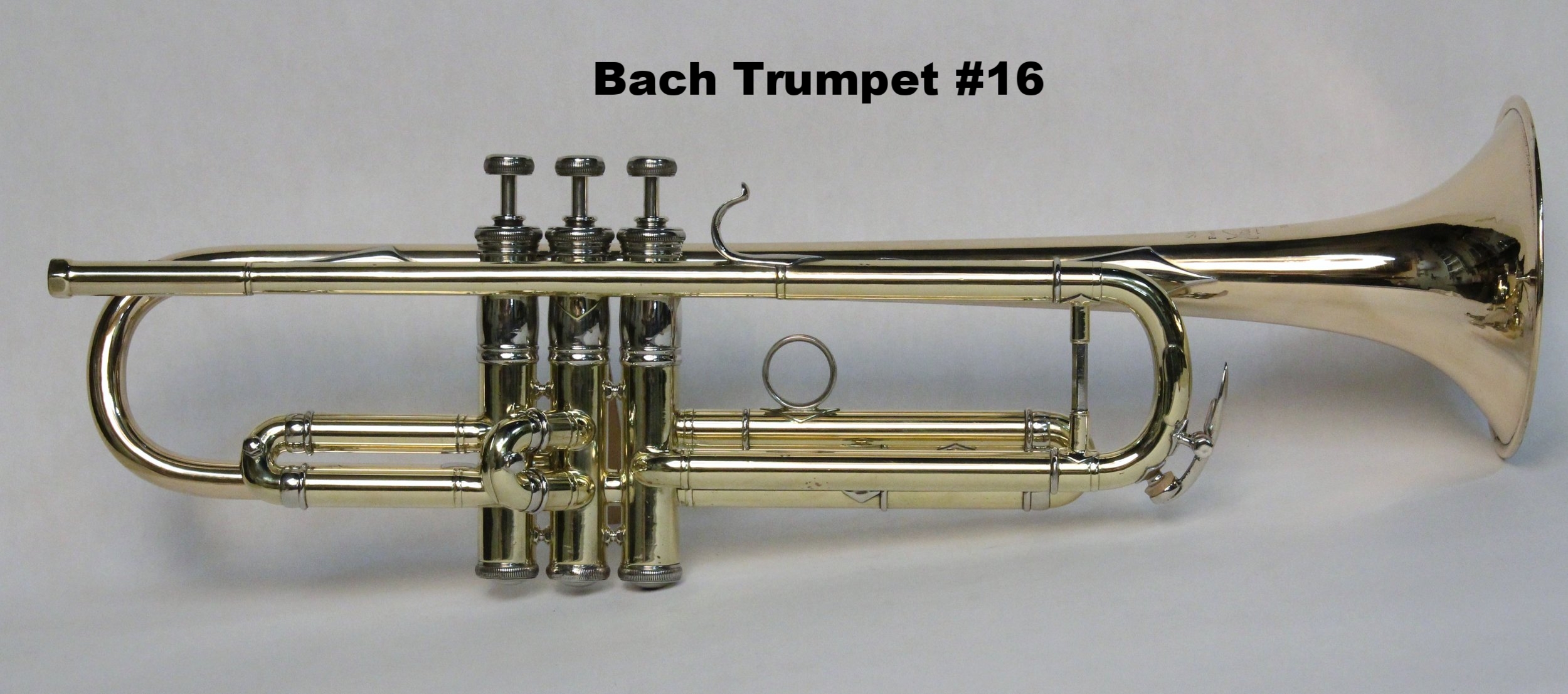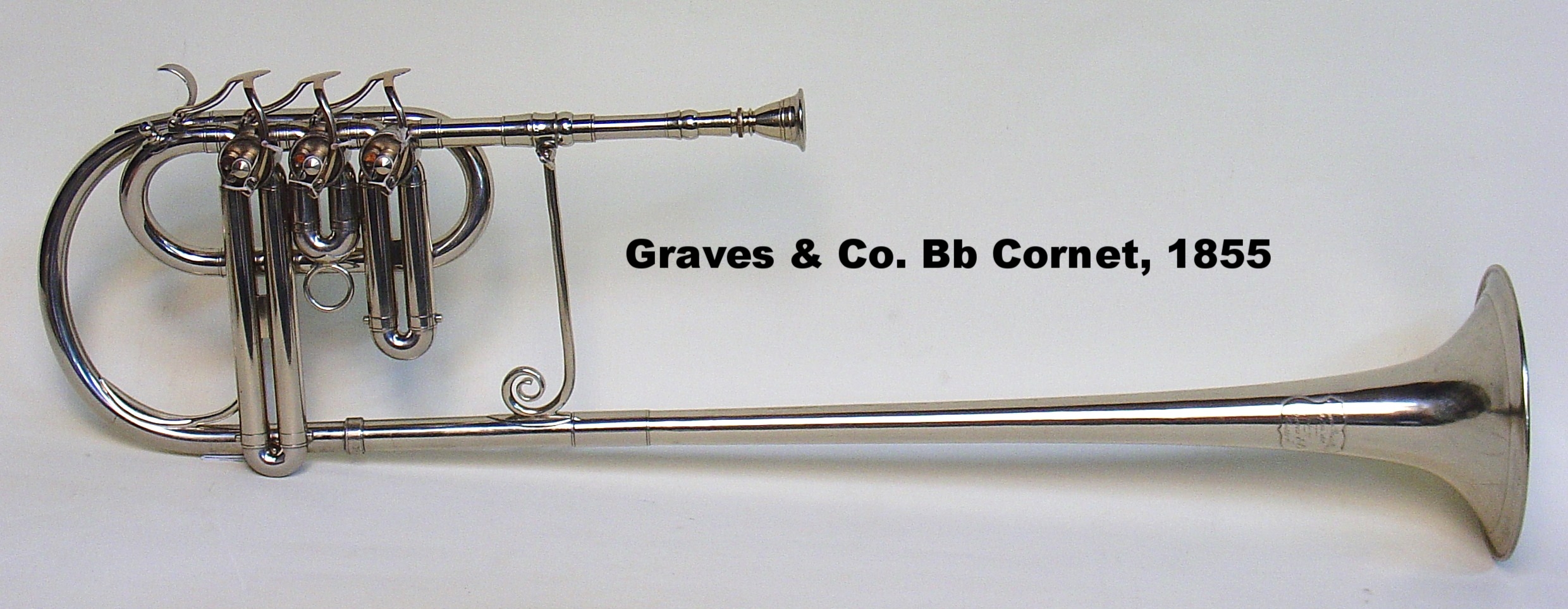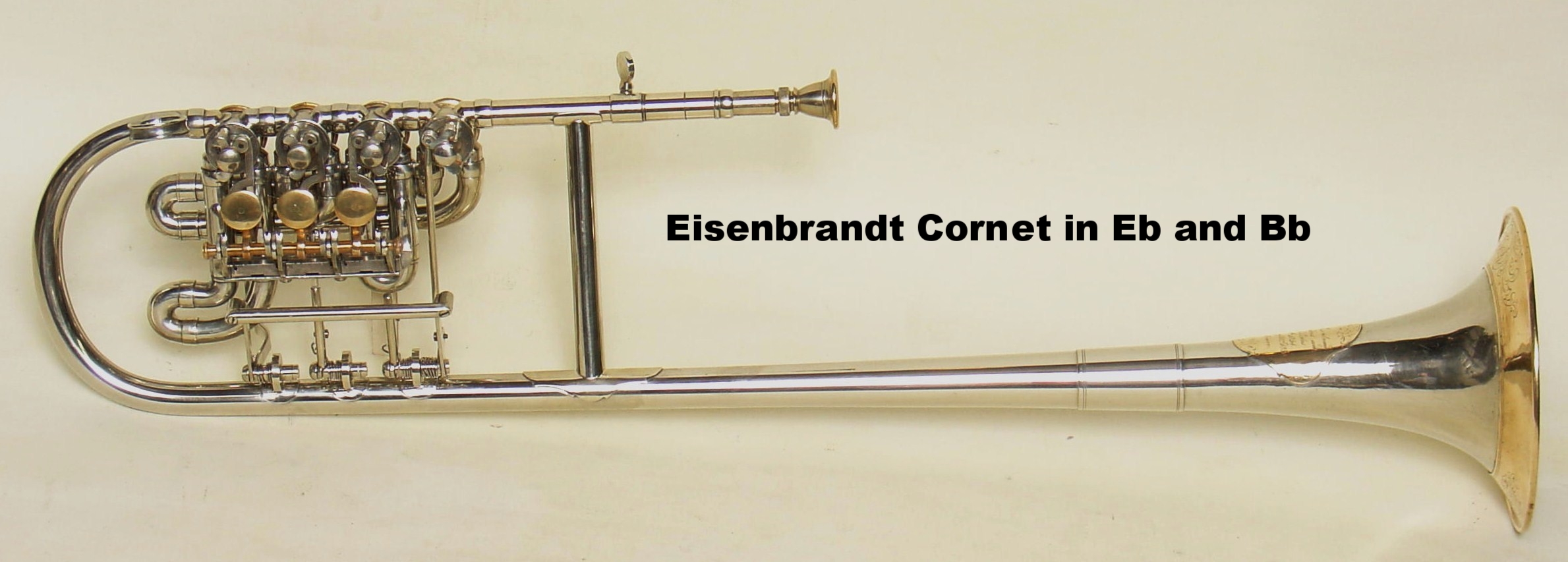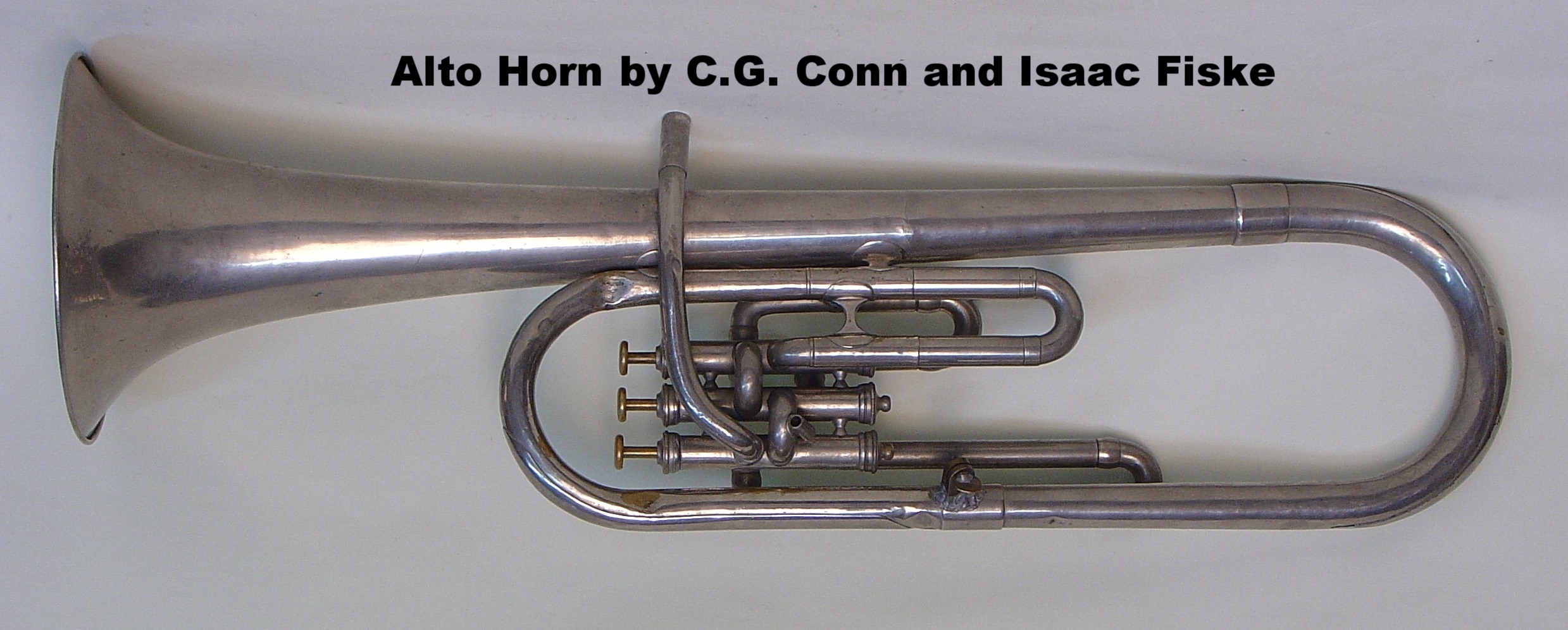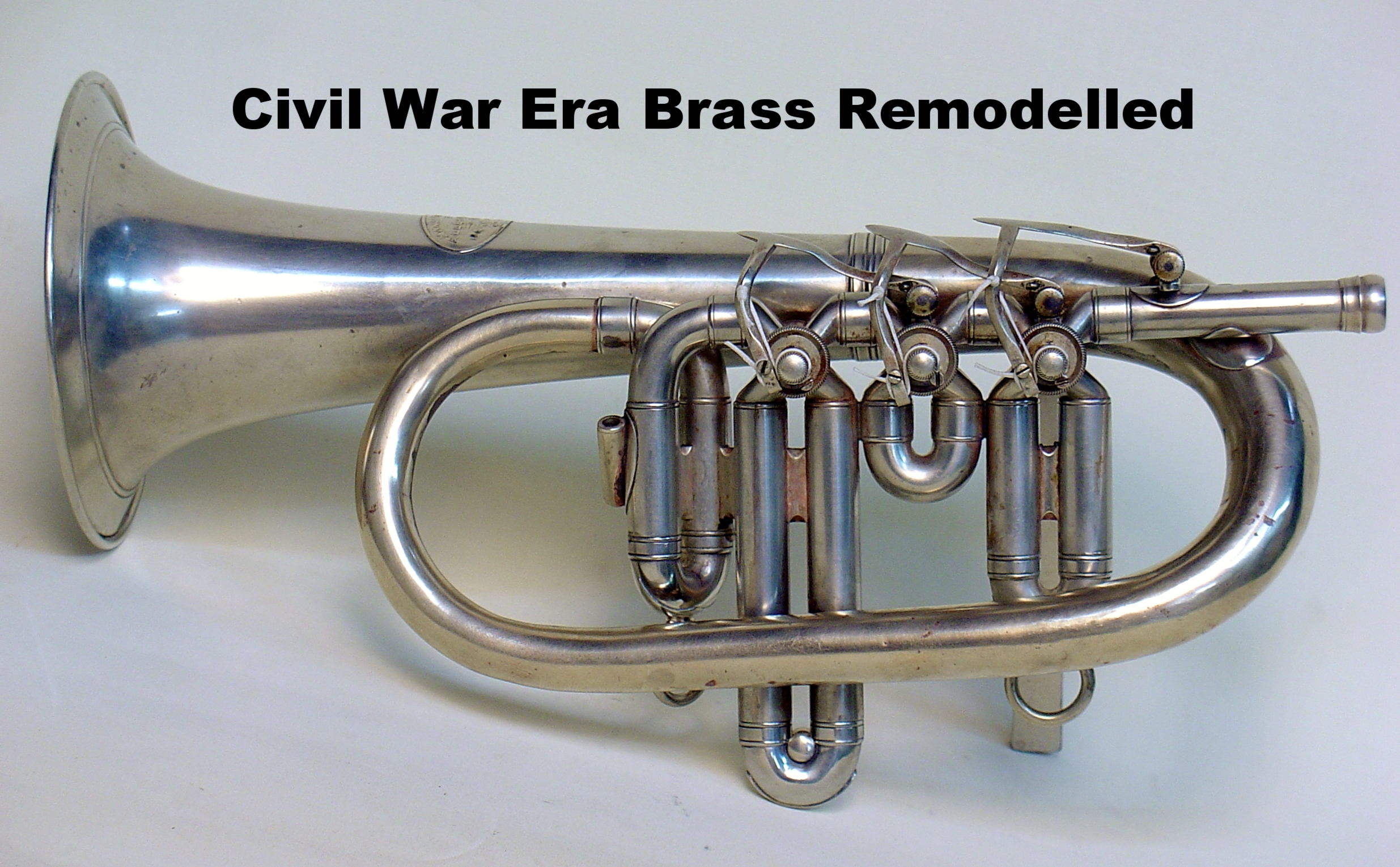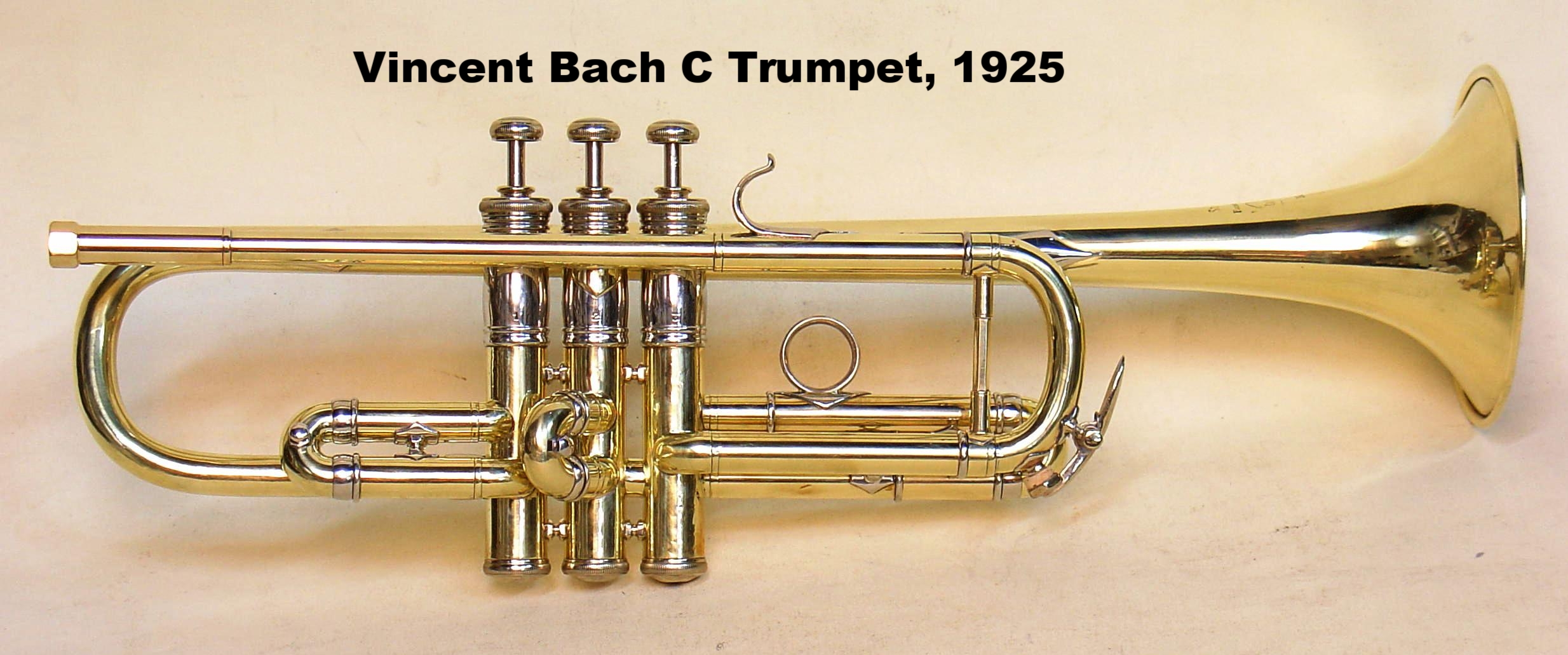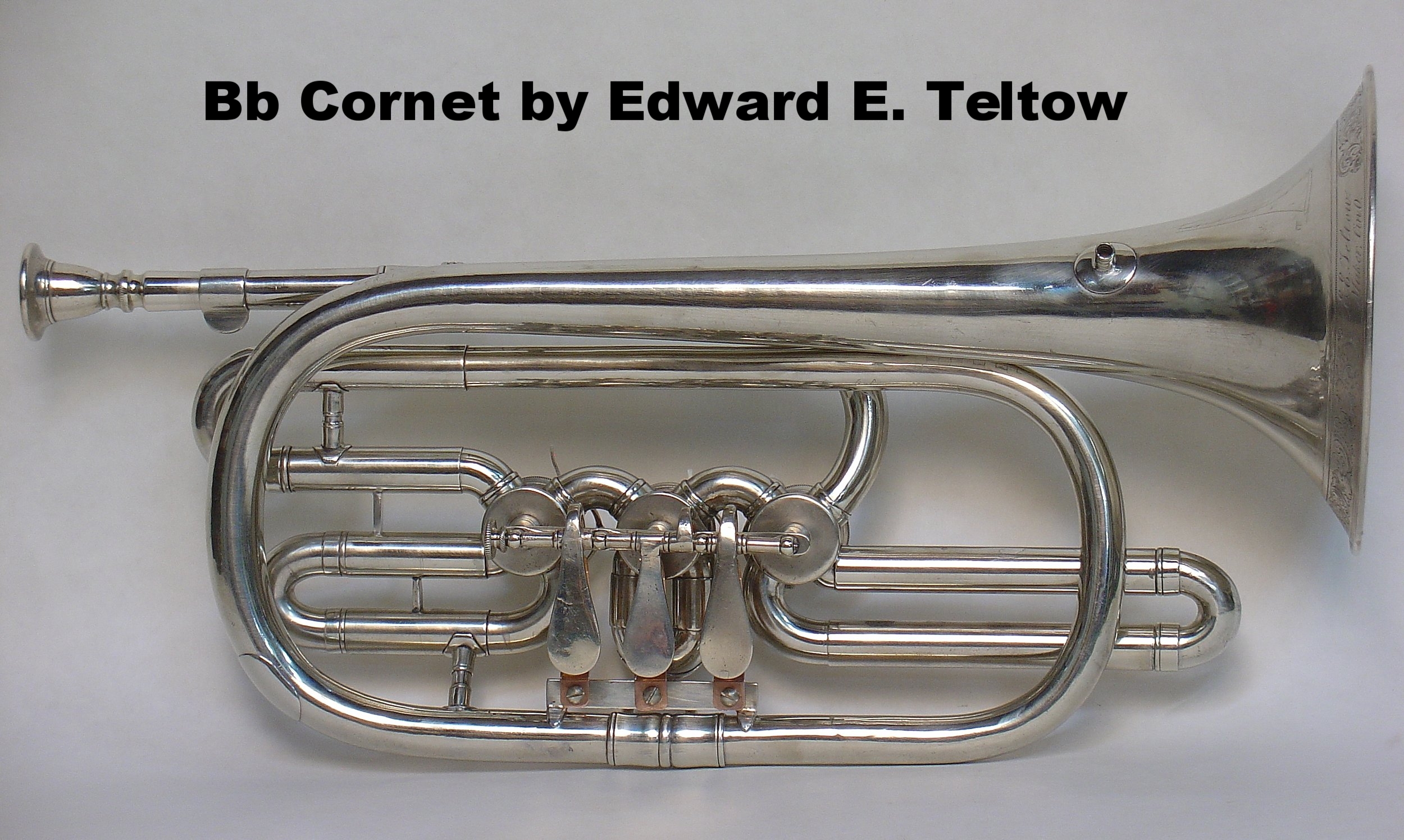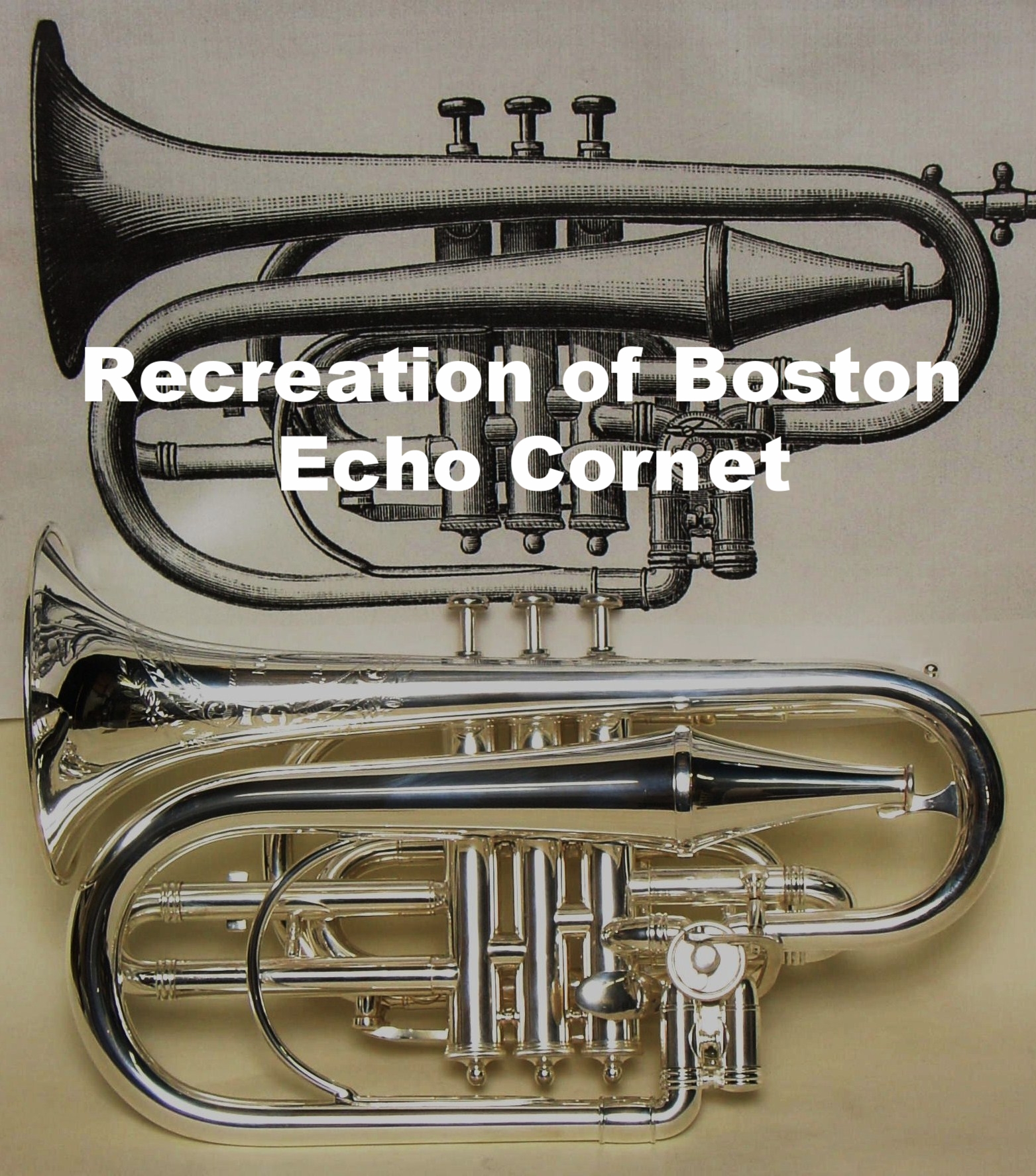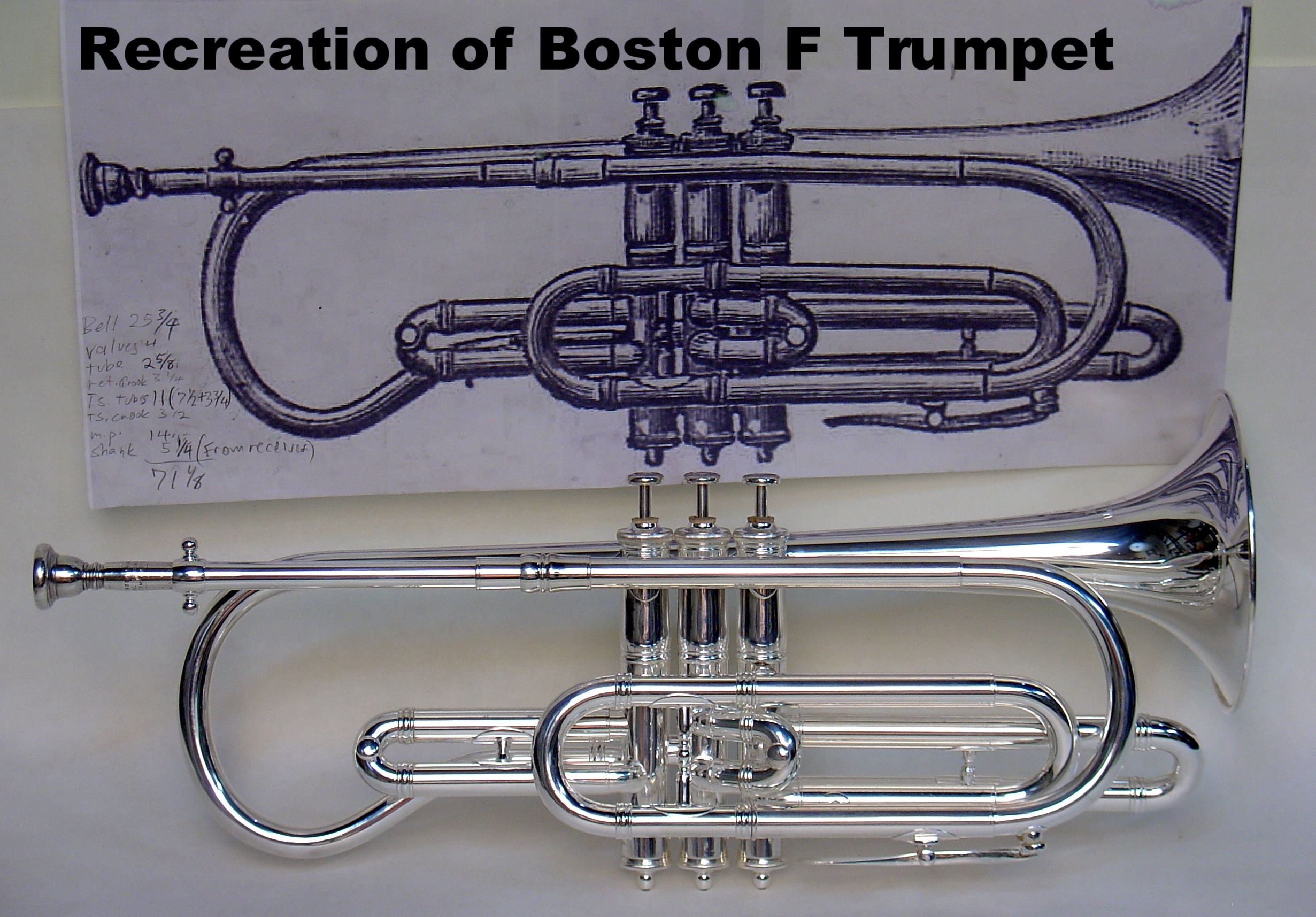(Brass) Instrumental Archeology
In correspondences with Michigan collector, Ron Berndt, I explained that in order to help preserve an old brass instrument and accurately repair or reproduce its parts, I try very hard to discover evidence of original design and finish details of an instrument that I have in front of me. Ron came up with the name “instrumental archaeology” and indeed, these simple ideas can be instrumental in learning the truth in many aspects of our world. Many details may at first seem obvious , but careful observation and consideration of all the facts might show other possibilities. We might make conclusions based on previous experience and what we’ve heard from others as well as the object at hand and it is very easy to miss evidence that is either contained in that instrument, others of its kind or in the (usually scant) literature available.
As in any field of study, there will usually be data missing, which we may infer based on what we know. The gap in our knowledge is often filled with confidence from years of experience and multiple examples of similar instruments. If the object at hand is deemed to have historical importance, that confidence should never make us believe that we have all the evidence. We need to make a conclusion, but always know that there may be more to learn that may show us that we were wrong. This is a simplified application of Bayesian analysis, in which a probability is assigned to a conclusion and continually updated as more data is encountered. Certainly, the study of brass musical instruments is not important enough that our errors will have great effect on our cultural bearing, but there is great satisfaction in knowing that we have done our best and be examples to those in other fields.
That’s more than enough philosophy, here are a few specifics: I was working on Ron’s King Special model cornet, which was missing its mouthpipe and primary tuning slide. This is the only known example of this model and Ron was not able to find even a catalog image of one, so we had to do the best with what we had. The first photo was taken by Ron before sending it to me. There had been a diagonal brace on the bell, connecting to the receiver end of the mouthpipe and while we were sure that it was an original King product from the time, the attachment to the bell was very sloppy. When the solder was removed, I discovered that the original silver plating was intact underneath, with no witness lines showing that there might have been a brace there originally. By odd chance, I had a tuning slide assembly from another King cornet with the correct finish that was a perfect fit. While it may seem unlikely that this slide came from another Special model cornet, being such a rarity, it appears to be the correct part. I made the mouthpipe based on several other examples of King cornet models, knowing the design is only an educated guess. I feel confident that, if another more complete example of this cornet is found, the replacement parts will not be exact matches, but not embarrassingly wrong.
The other instrument that we were discussing at that time was Bach trumpet #16, which I’ve already presented on its own page on this site. This is an especially good example to consider here, since my confidence in the correctness of the preserved details range from secure to moderate and also discusses the importance of preserving modifications that could be important to the history.
The photo of this Bach trumpet and the next ten photos are all linked to the pages showing the subject.
Another recent project that uses data from both the subject instrument and another that is almost the same is the Graves four valve tuba. This was missing many important parts, but my confidence is very high that the reproductions are very accurate. The reason for this is that the witness marks that showed where original parts had been soldered were unambiguous and matched the more complete example very closely. The one part that I have a little less confidence in is the mouthpipe crook. The original instrument did not have its original crook, so that had to be based on one in a Graves Bb bass (euphonium).
The Graves Bb cornet with bell over the shoulder was missing even more parts than the tuba and there are no other examples known to exist, necessitating more creativity. We are lucky that there are photographs from the period, of musicians holding cornets of the same make and model and even more important information acquired from a number of Eb cornets with bells over the shoulder and circular Bb cornets, all by Graves, from the period. These instruments cannot be dated more accurately than to know that they are from Graves’ early Boston period, from 1851 to the early 1860s and there are small variations in design seen that we can’t presently know are earlier or later in these years.
Another extreme example is the Eisenbrandt double cornet, for which there was even less information that was helpful. The patent drawing was obviously not accurately done, and probably predated the prototype and witness marks on the original parts were very few. Once again, I can’t have high confidence that this instrument is exactly as it was when new, but I made a great effort to gather all the data available and used my best judgment.
The design of various parts of an instrument, such as braces, caps, buttons, ferrules, knobs, rings and hooks are usually easy to determine to be right or wrong, but not always. Smaller makers often purchase parts from suppliers or larger makers and a change in supplier might result in a slight design change. Often a valve assembly is purchased that includes the slide tubes and braces that don’t match what is made or purchased from another supplier to be used on the rest of the instrument. Years of experience will most often help in this judgment, but we can always be fooled.
Sometimes a valve section from an instrument of another maker is installed to make a complete instrument, but this is rarely difficult to determine. There are usually different design elements along with witness marks where the original parts were soldered. In contrast to this, is the Fiske alto horn with a Conn valve section that seems to have been made up of obsolete parts that had not been previously used. This was likely done after Conn took over the Fiske factory.
Most makers strive to make their instruments beautiful to the eye as well as highly functional. The tubes, including the bell, are usually parallel or perpendicular and when they are not, they usually stand out as being damaged or badly repaired. The difficult cases are where a tuning slide is not parallel with the bell or other tubing so that it can be drawn out. This is very rare and always leaves me unsure that I’ve got it right. It is important to me to mount the parts the way that they were originally, including placing the brace flanges and other connections exactly where they were. This can be difficult in cases (all too common) when there are multiple witness marks where the brace has been mounted or showing that several different brace flanges had been used. Usually, there is other evidence, such scraper or file marks that were under the original flange or it is obvious where it should be placed to make the instrument straight and parallel (or perpendicular).
The alloy of brass used can often be used as a clue as to whether or not a part is original to an instrument, but this can also throw us off the scent. It must be kept in mind that bells were very often made from brass of a higher copper content than the rest of the instrument starting in the last quarter of the 19th century and even earlier in Germany. Nickel silver (German silver) is often used as a trim material in better quality instruments, but those made primarily of nickel silver rarely had brass parts originally.
In the case of the Allen Eb soprano, in which I was able to confirm that it had been remodeled, the alloy of the nickel silver in the new parts did not match the original bell metal. This was confirmed by the witness marks where the braces were originally attached. However, it is not unknown for the alloy of the nickel silver to vary slightly and I suspect that instrument makers were not always able to acquire the exact alloy that they desired. In one memorable case(unfortunately, I didn’t photograph), the two halves of a slide crook on a cornet by Isaac Fiske were different alloys and noticeably different colors. This is quite unusual, but must be kept in mind when making a conclusion in deciding the authenticity of existing parts.
I haven’t yet mentioned how parts of an instrument are marked and how that might add helpful information. Valve parts were often numbered with serial numbers, or in batches of assemblies (valves might be numbered 25, 26 and 27 for example). This might tell us whether or not the parts are original to that instrument, or the serial number might tell that it is or is not from the same approximate time. A few makers, such as C.G. Conn stamped the serial number on the waterkeys as well, but this was only during the late 19th and early 20th century. It is almost always more helpful to have more complete original instruments to identify original parts.
Many more of the instrument featured in both the “Restoration” and “Museum” sections of this site describe how I determined how best to repair, restore and preserve them. Interesting examples are a Bach C trumpet made in 1925, Teltow Bb cornet, keyed bugle by Wright for Graves and others. Some may consider it to be stretching the concept of archeology a bit, but I have also attempted to accurately recreate several instruments that no longer exist, such as a Boston F trumpet and Echo Cornet. This can also include what I call "replicas" that are more or less accurate reproductions of historic instruments. Generally, I strive to make instrument as close to the originals as is reasonable, within the constraints of my small shop and the economics of making a living.
Herbert Heyde, the leading expert on German brass instruments and brass instrument history in general, has even used measurements to determine in which region of Europe particular instruments were made. Knowing what units of measurement were used in that region, he can decide on the likelihood that an instrument was made there if certain parts, such as valves, tubing and the like, are very close to even units of that measure. Even more technically advanced, a team of Swiss academics are analyzing the chemical content and thickness of brass in historical instrument in an effort to add more understanding of the source of the brass and manufacturing techniques. In an article in the Historic Brass Society Journal, volume 25, they report on their study of a number of French made horns from the early 19th century and compare them to contemporary instruments made in Germany and England. They admit that this study has only made very limited conclusions and hope that continued work will add to our understanding of the art and industry of that time. I look forward to learning more from them.
As always, I invite comments and corrections to anything that I report.

